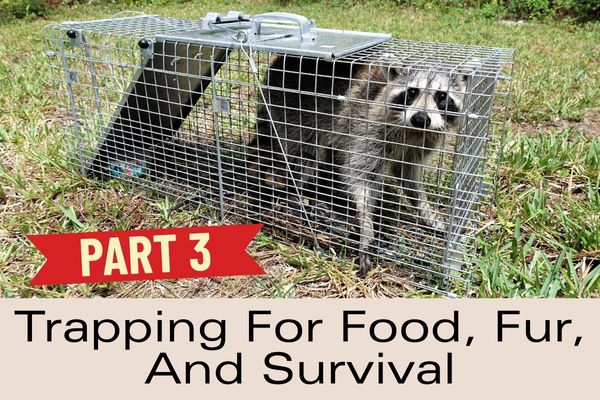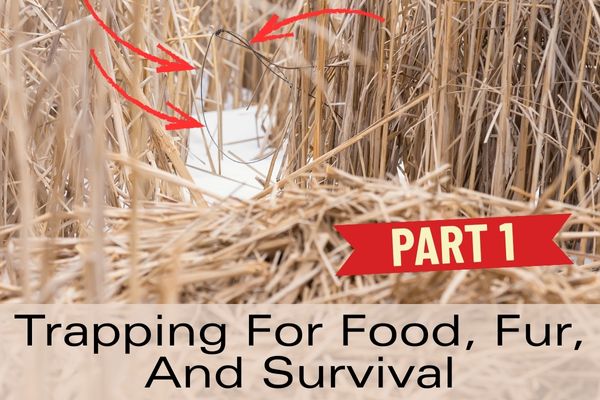First Aid Planning is a Prepper Necessity
Building a first aid kit is an important part of prepping. You want a fully stocked kit with the critical medical supplies to handle any emergency.
When disaster strikes, you won’t be able to rely on a hospital, urgent care clinic, doctor’s office, or 911 emergency services. You would need to rely on yourself and those around you to administer first aid and treat illnesses.
You can acquire your first aid kit one of two ways. You can buy a ready-made first aid kit. Or you can build a first aid kit from scratch that you customize to meet your current and possible future medical needs.
As with all prepping, you can build your first aid kit gradually.
A Prepper’s First Aid Kit Is Always a Work in Progress
If you’re like most people, you either have a first aid kit tucked in the back of the bathroom vanity and maybe even in the trunk of your car. In fact, it’s probably so old that the contents have either dried out or have past the expiration dates.
A prepper’s first aid kit is current. Preppers continuously restock medical supplies to ensure efficacy and add supplies and medicines to adjust to changing medical needs.
A prepper’s first aid kit can be placed in a bugout bag or stored in a specific closet or room designated to hold all prepping essentials. It’s suggested that your first aid supplies are contained in a waterproof storage box.
Take a few moments to think about what prepper scenarios you may be faced with in today’s world. You may experience natural disasters such as tornados, hurricanes, wildfires, floods, or earthquakes. Or you could be faced with a pandemic or an elevated threat of war.
Types of medical aid a prepper may require:
:: Allergic reactions
:: Bone fractures/breaks
:: Choking
:: Diabetic episodes
:: Dehydration
:: Dental issues
:: Drowning
:: Fainting
:: Falls
:: Life support – heart attacks/stroke
:: Heat stroke
:: Hypothermia
:: Nausea
:: Panic disorders
:: Skin burns
:: Starvation
:: Stings/Bites
:: Vomiting
:: Wound care/bleeding
The first aid kit you create may make the difference between life and death for the injured or sick.
Start With Designating Categories of First Aid Supplies
Having the right supplies can heal you from infection, treat an injury, or prevent the spread of contagious illnesses.
So, what are the must-have first aid items? Select the most important and versatile medicines and medical supplies to combat potential health issues in addition to supplies meeting your family’s current medical needs.
Here are the categories of supplies that your first aid kit should include:
>> Medicines
>> Medical Treatment Supplies
>> Miscellaneous First Aid Items
Customizing your first aid kit so that it’s right for you and your loved ones. It’s not so much about the quantity of medical supplies in your first aid kit, but instead the necessity of the selected items.
Medicines to Include in a First Aid Kit
When it comes to medicine, there are prescribed medications and over the counter medications. Obviously, prescribed medications are a mandatory addition to a first aid kit to manage a person’s current health conditions or possible conditions, such as fighting an infection. However, it’s equally important to include over the counter medications that can treat basic health issues.
Consider adding these medicines to your prepper first aid kit:
:: Acetaminophen/Tylenol
:: Allergy medications/Benadryl
:: Antibiotics
:: Aspirin/chewable aspirin
:: Biofreeze/muscle pain reliever
:: Burn cream
:: EpiPens
:: Glucose tablets
:: Hydrocortisone cream
:: Imodium
:: Orajel tooth/gum pain reliever
:: Pain meds/Ibuprofen/Advil
:: Pepto-Bismol
:: Personal prescription meds
:: Rehydration tablets
:: Saline eye drops
:: Vitamins
Keep in mind, medications have expiration dates so be cognizant to those dates and refill and restock when necessary.
Medical Treatment Supplies
This category of first aid supplies is necessary for burns, sprains, fractures, scrapes, cuts, and gashes. These items will help you control bleeding, help prevent wound infections, and more.
:: Ace bandage
:: Alcohol pads
:: Aloe Vera
:: Anti-bacterial wipes
:: Antibiotic ointments/Neosporin
:: Antifungal ointment
:: Antiseptic wipes
:: Band-Aids/bandages
:: Blood clotting sponge
:: Burn dressing
:: Butterfly bandages
:: Cotton swabs
:: Eye pads
:: Eyewash kit
:: Gauze pads
:: Gauze rolls
:: Hydrogen peroxide
:: Moleskin
:: Petroleum jelly
:: Pressure dressing
:: Rolled gauze
:: Sling
:: Splint
:: Surgical tape
:: Triangular bandages
:: Tourniquet
:: Wound closure strips
:: Wound irrigation syringe
Miscellaneous First Aid Items
In addition to first aid supplies to treat injuries and illnesses, there are many other supplies that can aid in treatments.
Consider these miscellaneous prepper items:
:: AED (automated external defibrillator)
:: CPR mask
:: Dental filling repair kit
:: Dental glue
:: Dental wax
:: Disposable masks
:: Emergency Mylar blankets
:: First aid manual
:: Gloves
:: Glue
:: Ice pack
:: Insect repellent
:: N-95 masks
:: Nail clippers
:: Safety pins
:: Scissors
:: Sunblock
:: Thermometer
:: Tweezers
:: Washcloths
Pros and Cons of Buying a Pre-Made First Aid Kit
By now you may be thinking that you want to take the easy way out and buy a premade prepper first aid kit. While purchasing a pre-made kit is quick and convenient, it may be missing key first aid essentials that you and your loved ones might require in the event of an emergency. Building your own first aid kit allows you to customize the supplies to meet your specific health needs or match possible emergency situations you may come up against.
Benefits of First Aid Training
A fully stocked first aid kit is great, but having adequate first aid skills is just as important. Take the time now to look into the many basic and advanced first aid training classes offered today. It’s important to learn how to act as a first responder to handle a variety of medical emergencies including how to perform CPR, use an AED (automated external defibrillator), stop bleeding, and treat/disinfect wounds, sprains, fractures, burns, dehydration, and more.
During catastrophic events, violence is more likely to occur. So, knowledge of treating injuries and wounds from combat, violent acts, and weapons is important.
As with all prepper steps, first aid training could make the difference between life and death.
Get Started Building Your First Aid Kit Today
Now you have a basic idea of the must-have essentials for a prepper first aid kit.
The type of supplies you add to your first aid kit will be a directly related to your family, their medical needs, and the type of situations you might confront. The harsher the disaster, the less likely you’ll be able to turn to medical professionals like hospitals, doctors, or emergency medical technicians (EMT). You need to be prepared to evaluate, diagnose, and treat yourself, your family and your group.
Don’t overspend to purchase every medical supply on your list immediately. Start with a few key medical essentials and before you know it, you’ll be on your way to having an impressive first aid kit. Don’t forget to customize your selections to meet specific medical needs. Also, remember to check expiration dates regularly and replace items when necessary.
Being prepared with the right supplies and first aid skills will help ensure a safe outcome should an emergency ever strike.




